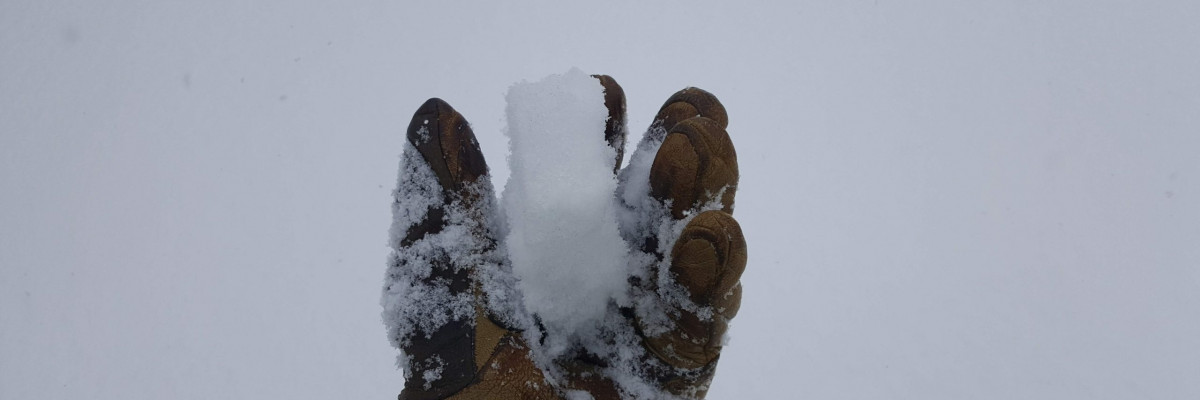The avalanche danger in the west-central Montana backcountry is MODERATE. Evaluate snow and terrain carefully.
Good Morning. This is Travis Craft with the West Central Montana Avalanche Center advisory on Tuesday, March 9, 2021. This advisory is sponsored by the Big Sky Brewing Company. This advisory does not apply to operating ski areas and expires at midnight tonight. The USDA Forest Service is solely responsible for its content.
Weather and Snowpack
Temperatures range from 20 to 26 degrees this morning. Winds will be light in the northern half of the advisory area today. The southern portion of the advisory area will have winds gusting in the 20’s out of the west. 3 to 6 new inches of snow fell in the last 24 hours.
Yesterday winter returned to our region. You can find a melt-freeze crust on all aspects except due North slopes. Any aspect that saw sun last week will have a crust that gets thinner as you gain elevation. Yesterday, from Lost Trail pass to the southern Missions, we found loose dry avalanches triggered easily on the crust with the new snow. The facets in our snowpack are gaining strength but are still showing failures in our pits. See video.
You are most likely to trigger these layers at mid-elevations on north-facing slopes and in shallower snowpacks at high elevations near rocks and ridges. Winds will increase today. Look for small wind slabs on leeward terrain to be sensitive to human triggers today. Give cornices a wide berth on ridges. Glide cracks are out and should be avoided because they can fail unexpectedly.
Bottom Line
Pay attention to how the new snow is bonding to old snow surfaces. Pay attention to aspect and elevation when traveling today. True North slopes will have dry snow but are the most likely to trigger our persistent weak layers. Choose less than 30 degree slopes with dry snow. Avoid shallow start zones on ridges. Before committing to a steep slope ask yourself: What are the consequences of triggering a slide? How big of a slide can I trigger?
Carry a beacon, shovel, and probe. Reassess conditions throughout the day and stay alert for signs of instability. Dig pits. Look for red flags.
Upcoming Education Events
Please visit our education page for an up-to-date list of regional educational events and course offerings. Below are a few select events and opportunities to check out.
- March 10th, 6-7:30 PM MST | FREE Online 1.5-hr Avalanche Awareness Session | Missoulaavalanche.org event | Delivered by A3 Pro instructors | Get more details and register HERE
Special Announcements
We want to reiterate our most sincere thanks to everyone who participated in Loving La Niña! Your contributions support avalanche forecast information and ensure free education programs throughout west-central Montana. We are honored to put these proceeds to work and provide the information needed for having fun and staying safe in the backcountry.
Supporting west-central Montana’s avalanche forecasting and education programs is made possible through your generosity and our gracious sponsors’ help. Together, we can save lives and continue creating the most fun, safe, and responsible backcountry community possible. Again, thank you for your continued support. We couldn’t do it without you!
Public Observations
Thank you to everyone who has taken the time to send in a public observation. Please keep sharing what you find and see while out in the backcountry. This online forum is a great resource to glean information about current conditions.
You can now text us your observations to (406) 219-5566 when you don’t have time to fill out the observations page. Texted observations won’t get posted on the website, but will be used in the development of the forecast.
Ski and ride safe.














